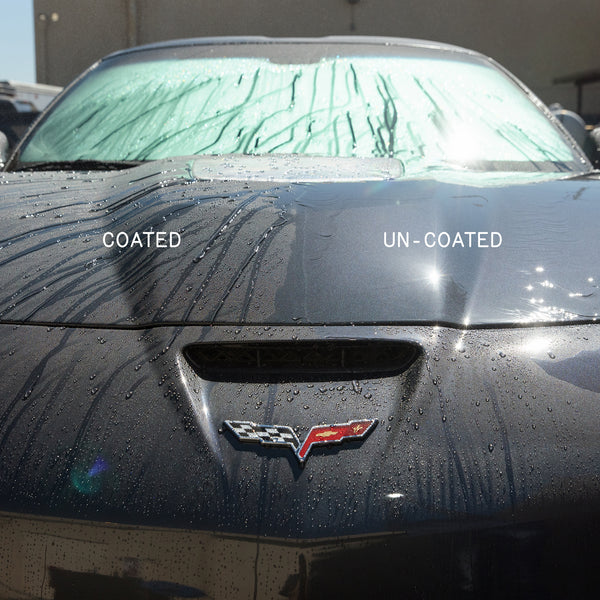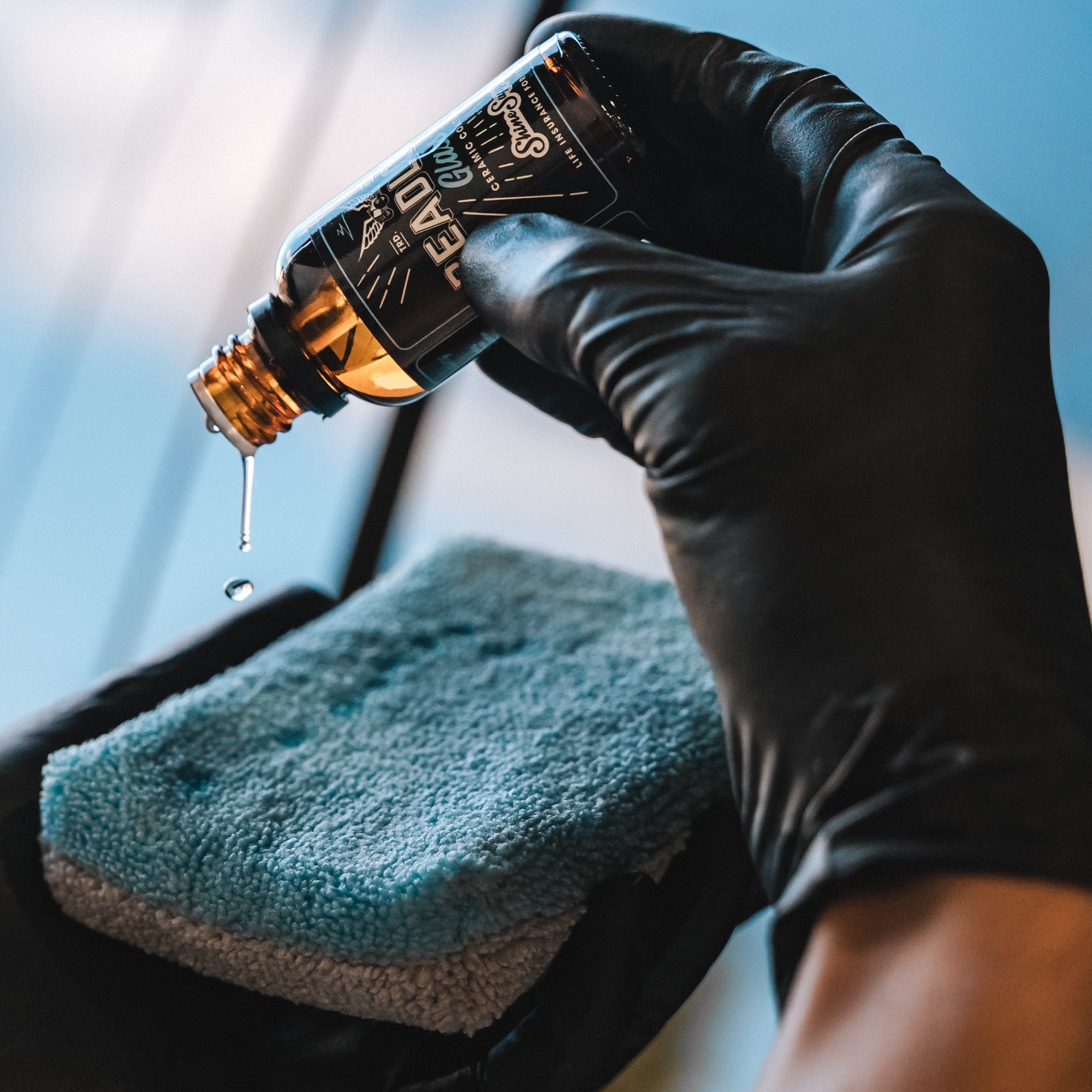Ceramic Coating: Shield Your Vehicle from Environmental Dangers with Ease
Wiki Article
Discovering the Science Behind Ceramic Layer and Its Influence On Cars And Truck Detailing
The application of ceramic finish in vehicle describing represents a considerable innovation in automotive care, rooted in its advanced chemical properties, mainly silica dioxide and titanium dioxide. Understanding the scientific research behind these materials exposes not just the safety advantages they provide however additionally their duty in boosting a lorry's visual longevity. As we explore the intricacies of the application process and the long-term implications for car maintenance, it ends up being clear that the option of ceramic finishing can essentially change one's technique to car treatment. What considerations should be made before committing to this transformative service?What Is Ceramic Covering?
Ceramic coating is a modern-day service that has actually acquired appeal in the automobile describing market for its ability to give long-lasting defense for vehicle surfaces. This sophisticated protective layer is generally made up of silica dioxide (SiO2), which creates a solid bond with the automobile's paint, creating a resilient shield against ecological pollutants. Unlike traditional wax or sealers, ceramic coatings use premium resistance to UV rays, chemical stains, and physical abrasions.
The application of ceramic finish involves a precise procedure, where the lorry's surface is completely cleansed and sanitized before the finishing is used (Ceramic Coating). As soon as cured, the covering improves the lorry's gloss, deepness, and clarity, offering a showroom-quality surface that lasts for several years. Among the key advantages of ceramic finishing is its hydrophobic properties, which ward off water and dust, making upkeep less complicated and reducing the frequency of washes
The Chemistry of Ceramic Covering
An essential element of ceramic finish depends on its chemical make-up, largely identified by the visibility of silica dioxide (SiO2) This substance is integral to the development of a durable, safety layer that bonds chemically to the lorry's surface area. When used, the SiO2 particles go through a process understood as polymerization, where they form a network of interconnected structures. This results in a durable, hydrophobic surface area that pushes back water and impurities.Along with SiO2, numerous ceramic coverings incorporate titanium dioxide (TiO2) and other additives to boost their efficiency attributes. TiO2, for instance, adds to increased solidity and chemical resistance. The communication in between these substances produces a distinct molecular structure that supplies a high degree of security versus ecological elements such as UV rays, acid rainfall, and oxidation.
Moreover, the application process often includes a precise prep work of the surface to make certain ideal adhesion of the layer. This chemistry not just ensures a long-lasting coating however additionally improves the aesthetic allure of the vehicle. Recognizing the intricate chemistry behind ceramic layers is vital for describing experts that aim to supply remarkable defense and longevity for their customers' cars.
Advantages of Ceramic Coating
While detailing specialists often highlight the benefits of ceramic layers, their benefits expand much beyond aesthetic appeals. Ceramic coverings produce a hydrophobic surface area that drives away gunk, dirt, and water, considerably decreasing the frequency of washes and the effort called for to keep a lorry's appearance.Moreover, ceramic coatings enhance the long life of the lorry's coating. Unlike standard waxes or sealants, which may last a couple of months, ceramic layers can sustain for many years, offering a long-term solution for auto treatment. This toughness equates to cost financial savings, as owners are less most likely to need frequent reapplication.
In addition, ceramic finishes are resistant to chemical discolorations and etching, which can happen from acidic substances like bird droppings or tree sap. This resistance not just protects the vehicle's aesthetics yet also minimizes prospective damage - Ceramic Coating. On the whole, the investment in ceramic coating uses automobile proprietors a considerable return in terms of security, ease of upkeep, and lasting aesthetic appeal, making it a significantly popular selection in the realm of auto detailing
this article
Application Refine Explained

Once the surface is appropriately prepared, the ceramic finish can be applied. Making use of an applicator pad, the service technician applies the layer in little sections, functioning in a crosshatch pattern to guarantee also protection.
Once treated, the ceramic coating creates a solid bond with the paint, offering improved defense and a glossy finish. Appropriate application is essential to make best use of the longevity and efficiency of the ceramic finish.

Lasting Influence On Car Care
The lasting influence of ceramic finishing on car care is substantial, as it essentially alters just how proprietors maintain their vehicles. By developing a long lasting, hydrophobic layer on the vehicle's surface area, ceramic finishes reduce the adherence of dirt, crud, and contaminants. This residential or commercial property lowers the regularity of washing called for, ultimately preserving water and cleaning items.Furthermore, the UV protection used by ceramic coverings aids to avoid oxidation and fading of the vehicle's paint, protecting its visual charm and resale worth in time - Ceramic Coating. This safety barrier helpful hints additionally reduces the probability of scratches and swirl marks, which are typical concerns in conventional paint coatings
Furthermore, ceramic layers help with much easier maintenance, enabling proprietors to cleanse their cars with marginal initiative. The smooth surface makes it tough for impurities to bond, allowing less complex elimination during routine cleansing.
Over time, the investment in ceramic finish might result in cost financial savings in lorry care services and products. On the whole, the enduring benefits of ceramic finishes not just boost the appearance of cars however additionally add to a more sustainable and effective technique to lorry maintenance.
Final Thought
Finally, the application of ceramic covering represents a considerable innovation in car detailing, driven by its unique chemical structure of silica dioxide and titanium dioxide. This innovation not only improves the aesthetic appeal of cars however likewise offers robust protection against environmental hazards and wear. The long-term advantages, consisting of lowered upkeep frequency and enhanced sturdiness, highlight the value of ceramic coverings as a necessary financial investment for preserving car appearance and stability in time.
Report this wiki page